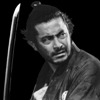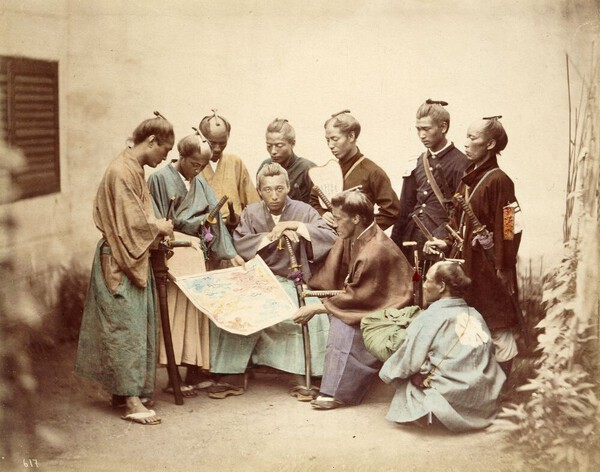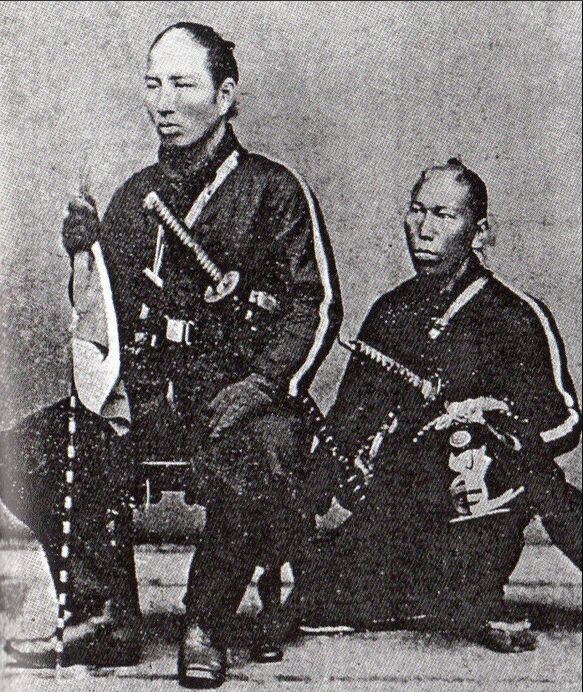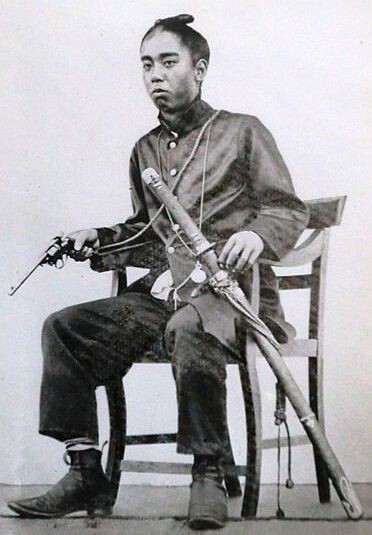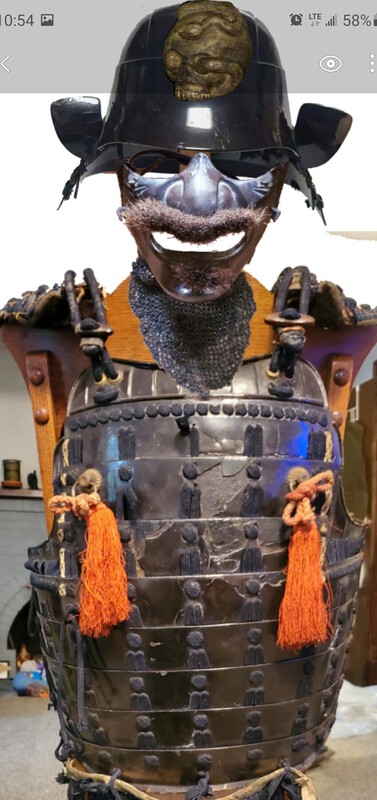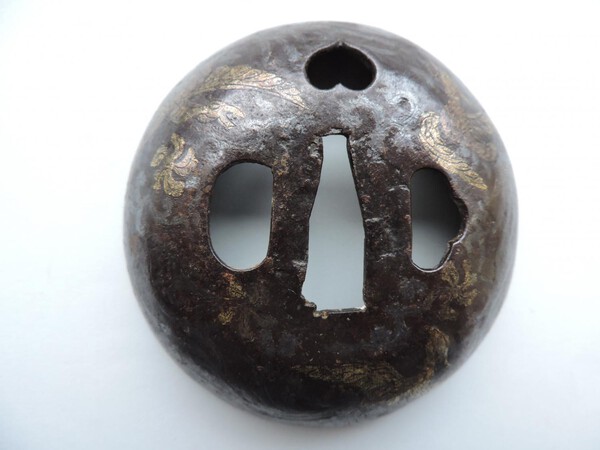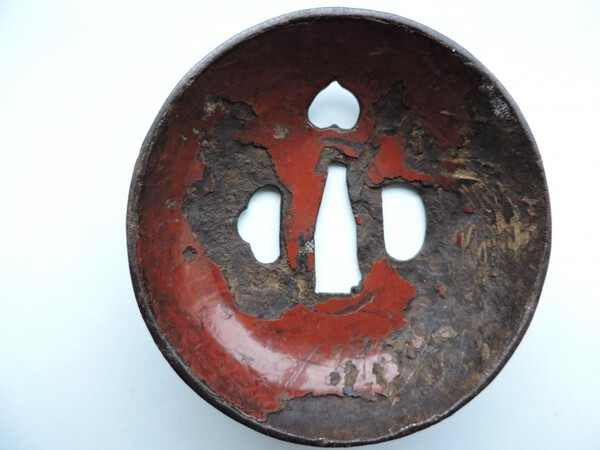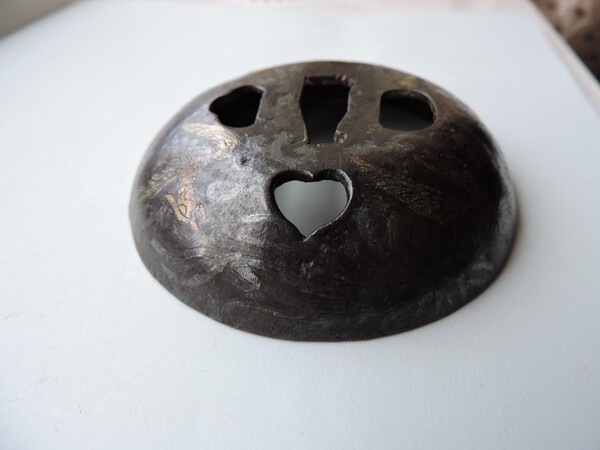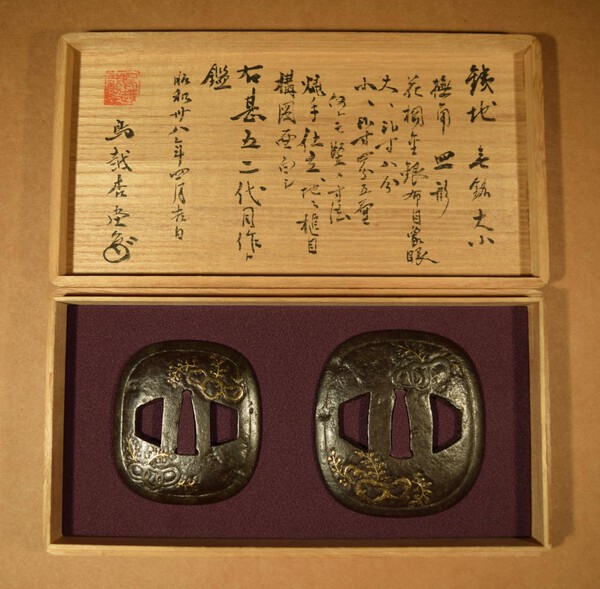Leaderboard
Popular Content
Showing content with the highest reputation on 11/27/2020 in all areas
-
The Satsuma Han was famous for the number of samurai there, and the more "relaxed status" they had, as in many were very poor and worked for a living as opposed to being retained. They were also known for keeping damaged swords in use with shabby koshirae, to the point that grinding a broken point down to the Ha was known as a Satsuma-age (= counter shortening). Reference here...http://www.ksky.ne.jp/~sumie99/suriage.html . My take is that Satsuma became a shorthand term, slang even, for a poor and shabby sword Photo's from the time show rebels of the civil wars with their own swords and usually western guns. That last photo is of the fortifications at Shiroyama, which was siege, not an open battle, Saigo Takamori died of a mortal wound from the IJA shelling of the position. Some debate whether he was finished off by his own hand or that of one of his men. There has been a fairly recent excavation of the site. rebel gun pits reveal a mixed variety of guns in use bought piecemeal from different countries. The final assault on the position was apparently launched by "Imperial Sword Armed Police" a unit that would reward more research.4 points
-
I absolutely agree. Not everything "good" has to be dripping with gold or covered in exquisite workmanship. These fuchigashira are to my mind and eye very well made bordering on excellent (brickbats welcome!). It is a pity, methinks, that the tsuka has been separated from its blade and koshirae. I'm thinking this came from a Shinshintou katana. The "eye-hole" in the kashira should tell a story, but I can't read it. I actually rank the fuchigashira above the menuki. BaZZa.2 points
-
2 points
-
I think this is a good tsuba in Hikone style. The composition and very thin carving in places are not of Soten school per se, but related. Its quite possible such can be correlated with a specific artist if one looks through a decent amount of books... Regarding what is and what is not Soten, its something unlikely to ever be resolved. There is thinking that only shakudo tsuba in "Mino-Goto" style can be attributed to the "real" Soten, since they are quite uncommon and relatively old. Everything with warring figures/sages/processions signed Hikone Ju... was made in significant quantities, and its impossible to understand which were by "the first generation". It was a popular product, also if memory serves right, adopted as official style by Ii Daimyo and thus carried on all clan's swords. Shakudo ones are 20 times more rare compared to iron ones and tend to be premium grade. Kirill R.2 points
-
1 point
-
1 point
-
And also in the beginning as well. It was during the time frame of May 1939 to May 1945 that the lower ranks were prohibited from wearing non-regulation swords. https://www.warrelics.eu/forum/f216/short-development-history-type-95-gunto-676112-post1751561/#post17515611 point
-
Very interesting theory, Dave. I was well aware of the sad end of Takamori and the circumstances, but I think it’s the first time I hear about Satsuma-age. That’s funny, because Usagiya is one of my favorite website, but I guess I must have missed that one. Thank you for this, Dave! Actually, I’ve just reread Usagiya's page and had seen this before but if I knew the shortening process, I had never noticed it was linked to Satsuma. Very interesting. EDIT: by the way, here’s an excellent book about Saigo Takamori https://www.amazon.fr/gp/product/B00DRDS1L2/ref=ppx_yo_dt_b_d_asin_title_o02?ie=UTF8&psc=11 point
-
Christian, as far as one can see from the photos, they are good! Close-ups will tell more. The FUCHI-GASHIRA may be simple, but it looks well made. So let us see some good detail photos.1 point
-
I frequent a few antique arms sites, and in the context of American Black-Powder rifles, they seem to refer to the ram-rod as an "arm". So reading this chaps passage, "The overall length is 38 1/2'', there is a bamboo dowel within the ramrod recess and the arm is likely more contemporary than antique." He is speaking of the bamboo dowel rod, or ram rod, and that is it in the ramrod recess (American's call it a ramrod and it's usually Hickory), so this may have led the seller to believe this is a contemporary replacement since it was bade of bamboo.1 point
-
I would be happy about short messages to know whats going on. All good - package arrived1 point
-
The least to be done by the seller is: - acknowledge the buyer of having received the payment - give an estimate date of shipment to the buyer (it can be more than a week for multiple reasons) - give him notice of shipment and send a copy of shipping documents if any.1 point
-
This is the revised Chapter 64, the second part of Chapter 28, Shin-to Main 7 Regions, part B. This chapter explains the seven regions of the Shin-to sword. Please click the link below to go to this chapter. https://studyingjapaneseswords.com/2019/09/02/65part-2-of-29-main-7-area-among-shin-to-sword-part-b/ Thank you Yurie1 point
-
Only type of polish that was done here in SA in the 90's and 2000's too. Instantly recognizable. That said, they usually clean up just fine if they were neutralized properly. Yours would look great when redone.1 point
-
So I had been on a maetate quest for a while now. Found a few I loved but I had a $200 max budget I was willing to spend and lost out on all the others to other bidders. One I just went too cheap and still kind of regret it....but I'm happy with the one I found and I stayed under my budget. As a fair warning im positive this maetate will not "float everyone's boat". But I have a penchant for folk art and things that give me a feeling and this checks both boxes. It was only described as "old" so I'm not sure how old it is but it is simply a carved wooden maetate. I think this will go well with my old rough edged yoroi armor, menpo and zunari kabuto. Still haven't put everything on the stand I built due to lack of space currently but ill photoshop this new piece on my old photoshop of my pieces (sadly seller didn't have a straight on shot of the maetate and I don't have it in hand yet). Few questions...1) is the difference between maedate and maetate the construction/materials? Google isn't helping me solve this. 2) anyone else want to share their carved wood maetate?1 point
-
前立て , often shortened to 前立, is read maedate. Yes it is 前に立つ (Mae ni Tatsu) 'stand in front', but grammatically speaking the sound of the T within a compound word generally softens to a D. Like Wakidate and Ushirodate. If you see Maetate written somewhere, it is not 100% wrong, but it just lacks that je ne sais quoi, IMHO. Having said that, there seems to be no agreement yet among experts. I can find examples of both usages on the following site for example. https://www.touken-world.jp/word-armor/helmet/page/3/#ancho52451 point
-
1 point
-
1 point
-
The inlays seem so large and can't put my finger on the specific thing or variable that makes them look 'boring' - that's not it but they appear so large and unsightly to me they just look like a bad imitation of what such inlay can be or is supposed to be. Also the dots that are 'missing' they just look like they were added to give that effect. I'm wondering whether Ford would lean towards a novice metalworker's work or just outright fake, albeit perhaps better executed than some cast of handworked imitation.. Now please don't take the above personal because this is just how it appears to me at this moment in time and I'm not even a layman or novice in this world. What do I know, curious to see more input.1 point
-
Wasn't suggesting it was confined to there. But seeing Gwyn is from there, and knowing it was/is done a lot where there are few or no fully qualified polishers...it was an educated guess I hear there are some fairly decent polishes coming out of the UK, so it's not a comment on all the guys there.1 point
-
Looks a lot like this: https://www.militaria.co.za/nmb/topic/33978-what-have-i-got/1 point
-
I agree with you guys. I use the term Satsuma Rebellion Swords because that is the common term used, but I see no reasons why the Satsuma rebels wouldn't have used regular swords. So unless there is a rational explanation, the armory theory sounds logical. Dave, I'd be curious as to what your theory of the origin of the name is. It could be interesting and maybe lead to new researches.1 point
-
Thank you everyone for your thoughtful responses. I am waiting to hear back from my bank on the trace that I had them undertake. Once I do I think I will give Tsuruta a call and see what the issue is. On a more positive note it is a pleasure to be here. Thank you for having me. I look forward to getting acquainted and to broadening my education in nihonto. Best, Paul1 point
-
Here's my 10 yens worth... If, as some have suggested this is a genuine piece of late Samurai history with all of its supposed associated integrity etc. then perhaps whatever price is paid is it's current 'value'. However, it strikes me as suspicious, particularly given the overt political expressions in Japan in recent years of 'virile nationalism' that this rare treasure wasn't snapped up long before it became necessary to offer it to all and sundry on the internet. Even if we ignore that unsavoury aspect of our present political climate any serious and credible piece of Japan's history is unlikely to be hawked on an internet web-site so frivolously.1 point
-
I've seen many old swords that were carried during the WWI and went to museum collections immediately afterwords... Quite a few have condition issues diminishing the value to collectors, sometimes to the point that were such offered for sale without their provenance they would have been rejected loud and clear by every member of the discerning public. Swapped and replaced parts, mismatched serial numbers, brutal and erroneous repair, ersatz modifications to make them look like a newly adopted pattern, or simply choices made by the original owner because that's what he liked. Things seen by collectors as either shady manipulations by unscrupulous dealers or something "that had no valid reason to exist in the first place". Yet this is the actual military life. With Japanese antiques I personally tend to be a bit concerned about the strength of provenance, since its a country where professionals prefer to resolve the disputes by appealing to sensei's judgement rather than to the original period documents, and what is accepted today as such and such might face scrutiny a generation later and suddenly you have nothing to show for it except that based on someone's words it was at one time accepted in this catalogue... But for this object it does not seem to be a strong objection. Would love to own this object at a lesser price, but personally don't see the sum demanded as unreasonable. And I personally really appreciate Tsuruta san offering such items in the open. It is not common. Kirill R.1 point
-
1 point
-
I believe that I have posted this tsuba before. It is decorated on the inside with red lacquer. On the outside are three engraved phoenix in silver and gold gilt (difficult to see in the photo). The boars eye (heart) piecing is also large for a tsuba. What religions do you no that are based on three deities (father, son and holy ghost), believe in rising from the dead (or ashes) and depict the #2 deity with a large heart? I believe that this tsuba belonged to a Christian (Roman catholic). Regards, John1 point
-
1 point
-
Ōdachi have always been something I like very much. Heck there is something about large two handers be it European, Japanese etc. that just hits me really hard. However when you think about the large tachi, not all of them are really huge. I think you could throw 4 shaku as a divider, ōdachi between 3 to 4 shaku is perfectly usable for trained warriors and those over 4 shaku get increasingly more difficult to use as the length increases. I have been trying to gather a small database for myself of various surviving ōdachi, the unfortunate thing I found out that there are lots and lots of great tachi around 85 cm in length still surviving but actually only quite few when you go over 90,9 cm in length. I will hopefully eventually share that database when I get enough swords added to it. Unfortunately I am so slow in everything. About the use, I have lots of good information in my reference library but unfortunately pretty much all of it is in Japanese. And my own translation from Japanese is extremely slow process filled with errors... (might have to get Markus translate few of these articles for me some day). I wish that I could already share some more definite info but on my research it seems ōdachi were used by foot as well as on horseback. On horseback the momentum would have had aided in use, and on foot the size will give reach. I have started translating a short article from NBTHK magazine - On the use of ōdachi as seen in Bukō Yawa. However my process is full of errors and I probably can never finish it because it is way over my league. Here are some small tidbits that I hope I have translated somewhat properly. There is lots and lots of interesting things in this one article alone. It pains me I have so much amazing information that I can't read yet... I just looked at the Futarasan-jinja catalog and ōdachi number 8 attributed to Shizu 141,9 cm blade and 184,4 cm in total seems to have several large nicks on the blade which might indicate them being battle wounds. Same with ōdachi number 12 attributed as Kozori 98,2 cm blade and 129,2 cm in total has several large nicks on the ha and 1 one the mune (at least those nicks it is difficult to look such large swords sized to fit 1 page). There are also few other blades in the catalog that show damage that I would probably think came from battle use. I could spend the whole night writing something about this subject as it is one I like really much. I just tend to start reading more info while writing, or picking up a replica sword and feeling that. So I have to end here or I'll end up putting whole night into this post.1 point


